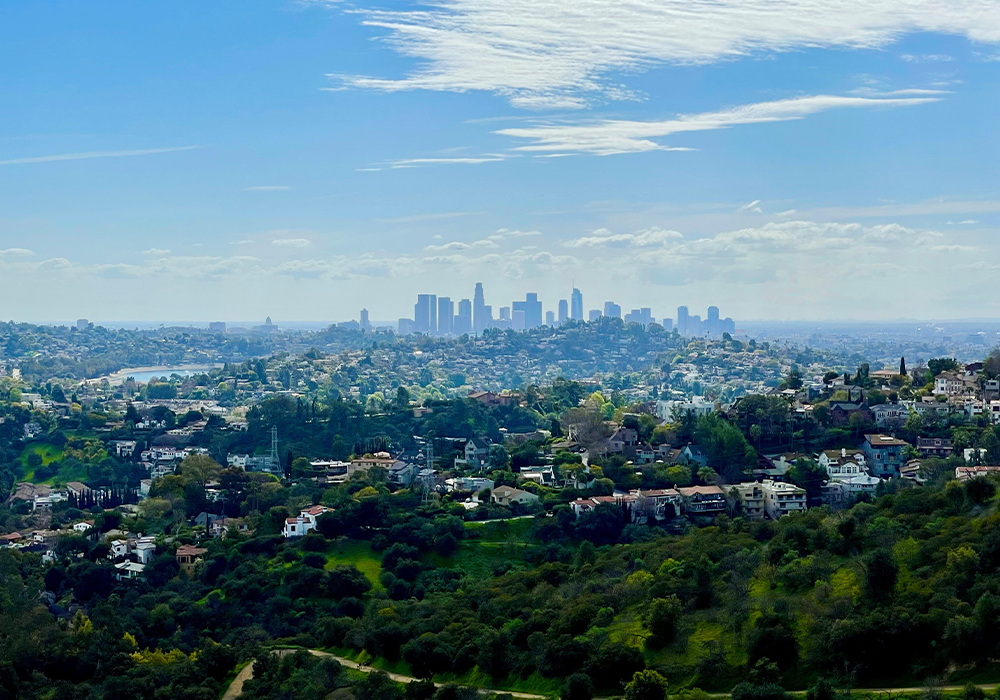Planning for Biodiversity in the Face of Climate Change

When planners use the term 'community,' more often than not they are referring to the human residents of a particular geographic area. In the face of the climate crisis and sixth mass extinction, planners have the role — dare we say responsibility — of expanding the profession's focus to include plant and other animal 'communities' living among our human communities.
Planners can play essential roles in addressing the climate crisis, biodiversity loss, wildlife connectivity, and hazard mitigation by leveraging their tools and expertise in zoning and land use regulations. As stewards of the urban ecosystem, planners can integrate habitat preservation and wildlife movement in an urban environment.
The City of Los Angeles aims to strike such a balance through a proposed Wildlife Ordinance to protect wildlife habitat and connectivity in L.A.'s hillsides, the city's most ecologically significant areas. In turn, these protections support related goals for open space management, watershed health, flood mitigation, fire safety, and maintaining overall quality of life for both people and wildlife.
Cities Integrate Strategies for Climate Resilience
Many cities are addressing climate change in the urban context by creating plans that aim to reduce carbon emissions, mitigate the urban heat island effect, localize food production, capture and reuse stormwater, and more. Some of these strategies can be combined to advance native biodiversity and reduce hazard exposure without impacting residents' enjoyment of private property.
Addressing biodiversity in an urban context is challenging, as the majority of land in cities like L.A. is privately owned and developable. In L.A.'s context, connecting habitat on public and private properties is vital for supporting wildlife movement and inevitable range shifts due to climate change.
Maintaining native vegetation with consideration of wildfire fuels and the way steep slopes exacerbate fire's spread becomes even more critical in hillsides with landslide-prone slopes and vegetated open spaces interspersed with houses.
Existing tree canopy and vegetation retention also allow for increased carbon sequestration, reduce the heat island effect, and provide flood mitigation, among other essential ecosystem services.
By minimizing overall land disturbance, keeping development more compact, and retaining habitat, the plants, animals, and ecosystems can remain connected for better climate resilience.
Private Property Key to Ecosystem Health
Since public lands are largely protected, zoned for open space, and managed by governmental agencies and nonprofits, it is critical to look to private property protections to ensure a cohesive approach to creating healthy ecosystems. Particularly in urban areas, applying these more sustainable multi-benefit practices can be effective interventions.
The proposed regulations of L.A.'s Wildlife Ordinance would primarily apply in an area that is a mix of single-family zoned parcels among open space and public lands. As development in this hillside area has increasingly trended larger over time and often replaced native vegetation with structures, impervious surfaces, tall fences, and walls, it has resulted in habitat fragmentation degradation, and biodiversity loss.
By promoting habitat and landform retention, the proposed ordinance will improve wildlife health and movement through standards that better regulate grading, residential floor area, lot coverage, vegetation and landscaping, height, fences and walls, lighting, windows, and trash enclosures.

Integrating biodiversity in an urban context is vital for supporting wildlife movement and building resilience - with benefits for animals, plants, and humans alike. Credit: Kat Superfisky
Biodiversity Ordinance Aids Climate Resilience
The proposed ordinance will help to elevate the benefits of integrating biodiversity into land use planning, providing a model for communities to address biodiversity, habitat connectivity, and climate resilience.
Addressing climate change and the preservation of biodiversity within cities like L.A. is important. In addition to the intrinsic value of conserving the remaining natural resources and species that inhabited the area long before people altered the landscape, maintaining the ecological health of these areas can also provide ecosystem services that benefit human communities.
Planning For Cascading Hazards
Cascading hazards occur when an initial disaster triggers subsequent hazards throughout a community. Hear how planners are helping their communities prepare for — and mitigate against — cascading hazards at the local, state, and federal levels.
For more information about the City of LA's proposed Wildlife Ordinance, please visit the website and associated Staff Report for the City Planning Commission (2022).
Top image: Photo Credit: Kat Superfisky


